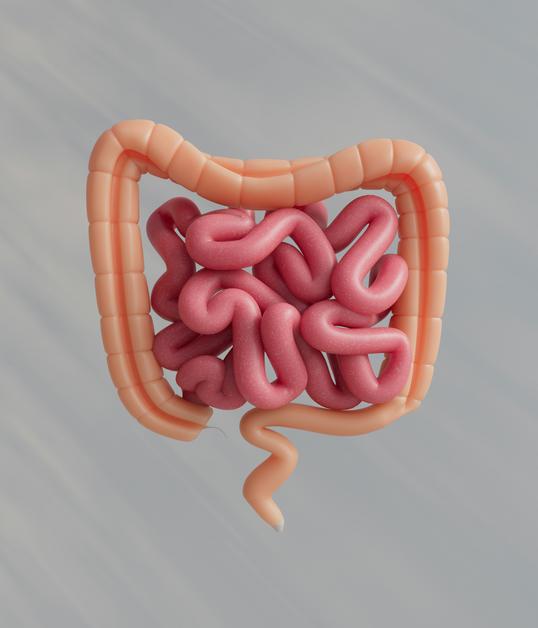As parents gaze at their newborn, many questions race through their minds—some fleeting, some persistent. Feeding choices, sleep patterns, skin rashes, and those unexpectedly loud tummy gurgles. Digestive comfort and immune strength are not just minor concerns; they permeate the daily routine, affecting feeding, sleep, and general well-being. Among the solutions often recommended, baby probiotics have emerged, promising balance in this delicate period. Do they truly hold the key to a more peaceful digestive system or a calmer baby? What does trustworthy evidence actually say? Concerns about safety, necessity, and effectiveness are valid—especially when products seem to multiply at every pharmacy shelf. Here, the intention is clear: provide parents with robust information, answer persistent questions, and empower careful decision-making around baby probiotics.
What Are Baby Probiotics and How Do They Work?
Walk into any pharmacy, and you’ll likely spot a range of baby probiotics—sometimes labeled with exotic bacterial names or boasting terms like “gut flora support” or “immune enhancement.” But what are they, really? At their essence, baby probiotics contain live microorganisms, often species of Lactobacillus or Bifidobacterium, which, when offered in the right dose, may help foster a more harmonious environment in a baby’s gut.
Why is this “gut flora”—also known as the microbiome—so important? In newborns, it is rapidly evolving, impacted by delivery (vaginal birth versus C-section), feeding method (breast milk or formula), antibiotic use, family environment, and even how many siblings or pets share the home. Bifidobacterium infantis and Lactobacillus reuteri, among others, are not just names on a label; they are the species scientifically spotlighted for fostering digestive comfort and immune training. Picture it like a small city developing after birth—probiotics serve as new, helpful ‘inhabitants,’ reclaiming space that would otherwise be open to less welcome occupants (harmful bacteria).
Breast Milk, Formula, and Supplements
Breast milk is not just a nutrient supply; it is a dynamic ecosystem. It contains not only beneficial bacteria but also prebiotics—special sugars (like human milk oligosaccharides) that nourish friendly gut bacteria. If breastfeeding is not possible, certain formulas attempt to replicate this benefit, either by adding probiotics, prebiotics, or both (synbiotics). For some families, specially formulated probiotic drops or powders become a practical solution, especially after events like antibiotic courses or a C-section.
Deciphering the Infant Microbiome: Birth, Development, and Disruption
You may wonder—how does a baby’s gut become populated in the first place? The answer is a blend of science and circumstance:
- Vaginal Delivery: The baby encounters the mother’s own microflora—particularly Lactobacillus and Bifidobacterium strains—during passage through the birth canal, essentially receiving a foundational ‘gut starter kit.’
- Cesarean Delivery: These infants often have delayed or altered acquisition of bacteria, frequently presenting with fewer beneficial strains and a higher proportion of environmental or skin-derived bacteria. Some evidence links this difference to heightened risk for digestive upset or recurrent infections.
- Breastfeeding vs. Formula: Breast milk supplies both immunoglobulins (protective proteins) and a host of live bacteria, supporting a predominance of bifidobacteria and creating a soothing, resilient digestive terrain.
Modern life brings unique challenges—early antibiotic exposure, hospital stays, and changing family structures. Antibiotics, in particular, although sometimes indispensable, do not discriminate: both good and bad bacteria are affected, sometimes creating an imbalance (dysbiosis) that can last for weeks. Breastfeeding and targeted baby probiotics can help rebalance this micro-ecosystem.
Types, Sources, and Selecting the Right Probiotic
Set aside marketing slogans and examine the label: which strains are present? A closer look matters, as not all probiotics confer the same benefits, and only those studied in infants should be considered. Bifidobacterium lactis BB12 and Lactobacillus reuteri DSM 17938 are backed by clinical studies for their safety and potential efficacy.
- Probiotics: Live, beneficial bacteria that populate the gut.
- Prebiotics: Nutritional fibers—think inulin, GOS, and FOS—that selectively nourish these bacteria. (Imagine prebiotics as the “fertilizer” and probiotics as the “seed.”)
- Synbiotics: A thoughtful combination of both, aimed at producing a stronger, more consistent positive effect.
While breast milk leads the charge naturally, formula with added probiotics (always check for explicit strain listing and independent quality certification) or liquid supplements offer another pathway. Note: yogurt and other fermented foods can help after six months, but should not replace supplements for babies under that age.
Health Benefits and Current Research: What Can Baby Probiotics Really Do?
Here, the spotlight turns to clinical reality. The strongest results speak to certain, specific situations:
- Infant Colic: Evidence robustly supports Lactobacillus reuteri DSM 17938 for reducing crying time in breastfed babies. It does not work instantly; most studies observed effects within days to weeks of daily use.
- Diarrhea (including post-antibiotic): Clinical trials validate Lactobacillus rhamnosus GG and Saccharomyces boulardii as beneficial in shortening the duration and severity of diarrhea.
- Immune Support: While 80% of immune function resides in the gut, translation to fewer infections is less direct. Nonetheless, a balanced microbiome may train the immune system to respond effectively and avoid overreacting—potentially reducing the risk of eczema and certain allergies, as observed in some long-term studies.
For constipation, research is less convincing, though many parents anecdotally report improvement. Remember, benefits are generally observed during regular supplementation; baby probiotics often do not permanently inhabit the gut.
When and How to Start: Practical Guidance for Parents
Introducing baby probiotics might seem simple, but it’s worth considering the optimal context and method:
- When?
- After C-section
- Post-antibiotic therapy
- During digestive symptoms (colic, diarrhea, constipation), always under a pediatrician’s guidance
For healthy, full-term infants who are breastfed, mother’s milk already imparts substantial benefits. If supplementation seems appropriate, opt for infant-designed products (drops or powder is generally easiest for this age group).
- How?
- Only choose supplements marked infant-specific; adult strains can behave unpredictably in young babies.
- Dropper hygiene matters: avoid direct mouth contact to prevent bacterial cross-contamination.
- Mix only with cold or room temperature breast milk or formula; heat destroys live cultures.
- Follow package instructions—usually five daily drops, not more, unless otherwise directed by a healthcare professional.
Every baby is different. Some show noticeable improvement within days, others need longer or may respond differently. Parental intuition, backed by pediatric oversight, remains invaluable.
Safety: Considerations and Cautions
The safety profile for baby probiotics in healthy, full-term infants is reassuring, with side effects generally limited to temporary gas or minor changes in stool pattern. Nevertheless, exceptions must be highlighted:
- Premature, very low birth weight, or immunocompromised infants: Very rare cases of sepsis have been reported, strongly linked to improper product selection or contamination. For these populations, only hospital-recommended and closely monitored probiotics should be considered.
- Regulation: Supplements are not stringently regulated like medicines. Trustworthy brands will list precise strains, CFU count (colony-forming units—a measure of how many live organisms per dose), expected shelf life, and independent quality certification. Avoid supplements lacking transparency or using vague marketing language.
Enhancing Baby’s Gut Health Beyond Supplements
Although baby probiotics play a promising role, comprehensive gut health springs from multiple, interconnected habits:
- Breastfeeding as often as possible, not just for nutrients but for live bacteria and prebiotics promoting a diverse, resilient microbiome.
- Skin-to-skin contact: Beyond warmth and comfort, this practice supports microbial sharing, reinforcing colonization of beneficial bacteria.
- Diet transitions: After six months, gradually introduce prebiotic-rich foods like bananas, oats, and artichokes, which will support the established bacterial communities.
- Antibiotic stewardship: Resist requests or pressures for unnecessary antibiotics, favoring them only for clear indications.
- Balanced household hygiene: Focus on reasonable cleanliness—meaning frequent handwashing and safe food handling—without descending into a sterile environment, which can paradoxically hinder microbiome development and immune balance.
Supporting the gut is not a one-size-fits-all process. Each family, and each baby, writes a unique story—baby probiotics may play a leading or supporting role, but the script is multi-dimensional.
Key Takeaways
- Baby probiotics are live microorganisms introduced to infants to nurture gut and immune health, especially in situations of disrupted balance (C-section, antibiotic use, digestive issues).
- Not all strains are equally effective; products should specify studied strains (like Lactobacillus reuteri DSM 17938 and Bifidobacterium lactis BB12) and guarantee CFU up to the expiration date.
- Breastfeeding offers natural, evidence-based support for a healthy gut microbiome. Baby probiotics act as an adjunct—especially after certain medical events.
- Parents should consult healthcare professionals before supplementing, particularly for premature or immunocompromised infants.
- Building and maintaining gut health exceeds what supplements provide: it’s a tapestry woven from diet, gentle hygiene, and a positive early environment.
- There is a spectrum—from immediate relief of symptoms like colic, to possible long-term immune protection—yet the scientific landscape continues to evolve.
- Trust in transparent labeling, medical guidance, and evidence-based choices offers reassurance in this dynamic field.
Rich, reliable support is within reach. For tailored recommendations, detailed health questionnaires, and access to pediatric experts, explore the Heloa app—a practical resource created to simplify the health journey for your family.
Questions Parents Ask
Can you give probiotics to a newborn?
Yes, certain probiotics are designed specifically for newborns, but it is always best to speak with your pediatrician before starting any supplement. Babies born prematurely or with specific health needs may require careful consideration when introducing probiotics. Health professionals can help you determine whether it is appropriate for your baby, and recommend the safest option adapted to their unique circumstances.
What is the best time of day to give baby probiotics?
While there is no one-size-fits-all moment, many parents choose to give probiotics at the same time each day to help with routine. Some find it convenient to add them to morning feeds, while others prefer bedtime. What matters most is consistency rather than the specific hour. You can gently mix probiotic drops with breast milk or formula (ensuring the liquid is not hot to preserve the beneficial bacteria). If you are unsure about timing, do not hesitate to discuss it with your pediatrician for a plan tailored to your baby’s habits.
Are there risks in giving probiotics to infants?
For most healthy, full-term babies, probiotics are generally well-tolerated with minimal side effects such as mild gassiness or subtle changes in stool. However, for babies who are premature, have a very low birth weight, or specific health concerns, it is essential to seek medical advice before introducing any supplement. Always choose products intended for infants and certified for quality and safety. Rassurez-vous, with a professional’s guidance, introducing probiotics can be done calmly and safely.










